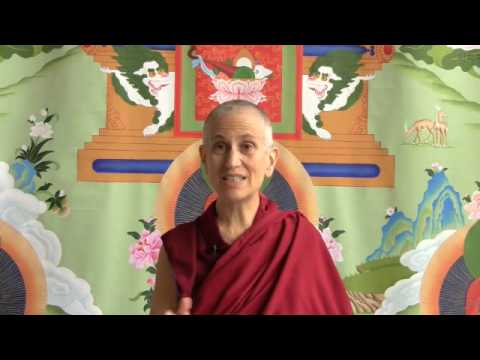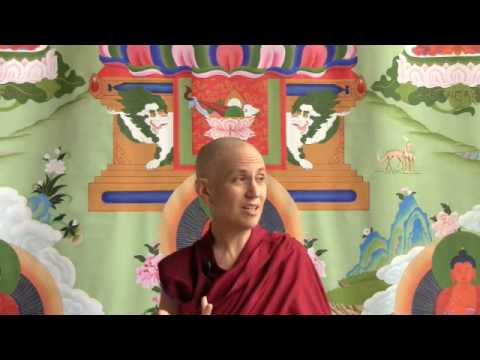Awareness of emptiness
Awareness of emptiness
Part of a series of Bodhisattva’s Breakfast Corner talks given during the Green Tara Winter Retreat from December 2009 to March 2010.
- How to strengthen awareness so you can meditate on emptiness
- If the mind goes to blankness while meditating on emptiness, more investigation is necessary
Green Tara Retreat 049: Awareness of emptiness (download)
[Responding to written question from the audience]
Somebody has been saying that they have been doing the four-point analysis: looking for the self, trying to find exactly what the “I” is, and that they come to some feeling of not finding it. Then, because of that, you know that it is empty. They have that awareness for a few seconds, but then the mind goes to blankness. What are ways to strengthen the awareness so that you can maintain that stability that the “I” doesn’t exist inherently, and prevent the mind from becoming nothingness?
To strengthen the awareness, it is concentration–that is what you need. That’s why they talk about unifying serenity with insight. Otherwise, you get some sense but then in the next moment it is gone. If your mind is falling into just nothingness or blankness then you need to actually go back to do more investigation. The mind hasn’t really figured out what emptiness is if it slips into just nothingness.
It’s interesting when you are doing the analysis. The first part is to get a sense of if the self, if the person, the “I” existed inherently, what would it be like? Even though it doesn’t exist that way, you are imagining what it would have to be like if it did exist that way. Then you start to investigate: how does the “I” exist? You start to look and say, is the “I” the same as any of the aggregates? Is it different from the aggregates? What is the relationship between the self and the aggregates? When you find that you can’t say that the “I” is inherently one with the aggregates, it’s not one and the same thing, and yet, you can’t say that it’s inherently different from the aggregates. Whenever we say I, or self, it is in relationship to some part of the body and mind. We know it has some relationship: it’s not inherently the same, it’s not inherently different. From that we can say it doesn’t inherently exist. If it did inherently exist, it would have to be either inherently the same or inherently different.
You try and hold your mind on that for as long as you can. You really have to investigate, and ask: “Is there any possible way that I can be the same as my mind or the same as my body?” It sure feels like we are somewhere in there, doesn’t it? When somebody tells us something that we don’t like, we just don’t like it! There is a definite me that doesn’t like it. [You also feel that] “I’m going to give that person a piece of my mind, and I’m going to defend myself, and they can’t treat me that way, and they can’t think that about me!” It sure feels like there is an I somewhere in that body and mind. You then say, “If the self were in the body and mind, then it should be findable.” What are you going to identify it as? When you can’t find something to identify as the “I” that is a sign that the “I” doesn’t inherently exist.
From that, you draw the conclusion that the “I” doesn’t inherently exist. Then you don’t get up from your meditation and think “I’ve realized emptiness!”
Venerable Thubten Chodron
Venerable Chodron emphasizes the practical application of Buddha’s teachings in our daily lives and is especially skilled at explaining them in ways easily understood and practiced by Westerners. She is well known for her warm, humorous, and lucid teachings. She was ordained as a Buddhist nun in 1977 by Kyabje Ling Rinpoche in Dharamsala, India, and in 1986 she received bhikshuni (full) ordination in Taiwan. Read her full bio.


